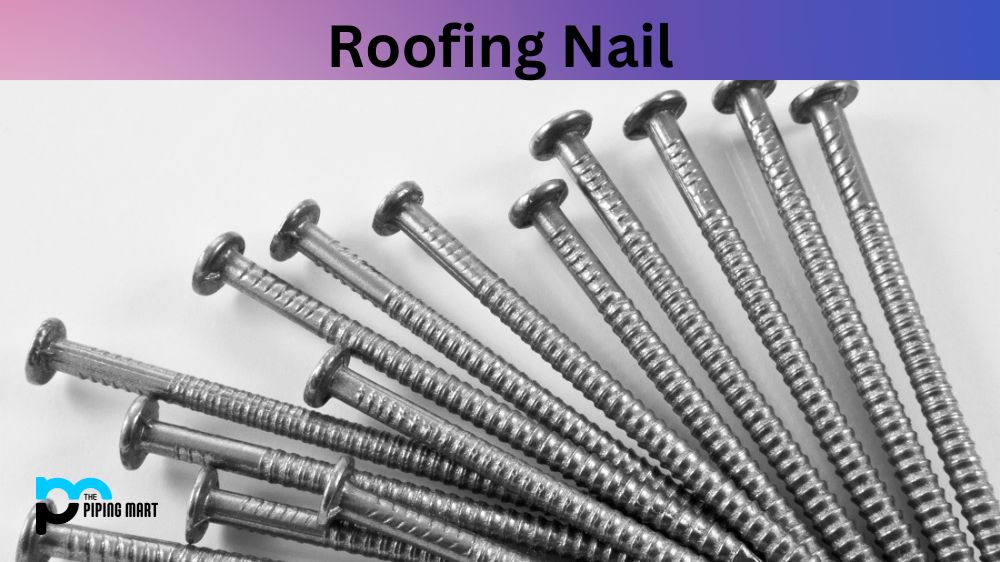Roofing nails are an essential component in constructing roofs. Their purpose in roofing projects is not just to hold shingles in place but also to provide structural support where a nail-down installation is necessary. Roofing contractors and DIYers rely on roofing nails to keep roofs secure and protected from harsh weather conditions. This blog post will explore roofing nails’ various properties, uses, and applications.
What is Roofing Nail?
Roofing Nail is a type of fastener with a large, flat head and spiral shank at the end. Its purpose is to secure roof coverings such as asphalt shingles, felt paper, or other materials to wood roof sheathing. It is typically coated with corrosion-resistant materials like zinc to provide additional protection from the elements. In order to ensure that your roof provides long-term performance and durability, it’s important to use the right type and size of roofing nail when installing any rooftop covering material.
Roofing Nails Properties:
Roofing nails are typically made from stainless steel, galvanized steel, or copper. Each material has unique properties that make it suitable for different roofing projects. Stainless steel roofing nails are highly durable and corrosion-resistant, ideal for corrosive environments. Galvanized steel roofing nails are coated with zinc, which prevents rusting and corrosion, making them perfect for outdoor use. Copper roofing nails are preferred for their attractive appearance and superior strength.
Roofing Nails Uses:
Roofing nails come in different shapes and sizes, depending on the roofing type. They are commonly used for asphalt shingle roofs, wood shingle roofs, metal roofs, and flat roofs. Roofing nails also install roofing felt, underlayment, and drip edges. In addition to their primary functions, roofing nails can be used for exterior trim work, siding, and framing.
Roofing Nails Application:
When installing roofing nails, it is essential to ensure that the nails are long enough to securely fasten the roofing material to the roof deck but not so long as they penetrate the deck. Overdriven nails can lead to leaks and eventually damage the roof structure. Underdriven nails can cause uplift, leading to shingle blow-offs. It is also crucial to space the nails correctly to ensure that the shingles lie flat and uniform.
How to Use Roofing Nails:
The first step in using roofing nails is to prepare the roof deck. The deck must be cleaned, dry, and free of debris. Next, determine the appropriate size and type of nails required for the roofing project. Secure the first shingle with roofing nails at the bottom edge. Work your way up the roof, laying each shingle straight, and apply roofing nails. Remember to space the nails uniformly and avoid driving them too deep or too shallow.
Safety Considerations:
Always wear safety gear such as gloves, goggles, and a respiratory mask to avoid injury from flying debris and fumes when working with roofing nails. Observe caution when working on a roof, especially in wet and windy conditions. Ensure that the roof is sturdy and stable before stepping on it, and avoid working on the roof when it is wet or has snow and ice on it.
Conclusion:
Roofing nails are an indispensable part of roofing projects as they provide structural support and protect the roof. Knowing the properties, uses, and application of roofing nails is crucial for successful installation. By observing safety precautions and proper installation techniques, you can ensure a long-lasting and durable roof for your home or commercial building.

A passionate metal industry expert and blogger. With over 5 years of experience in the field, Palak brings a wealth of knowledge and insight to her writing. Whether discussing the latest trends in the metal industry or sharing tips, she is dedicated to helping others succeed in the metal industry.




